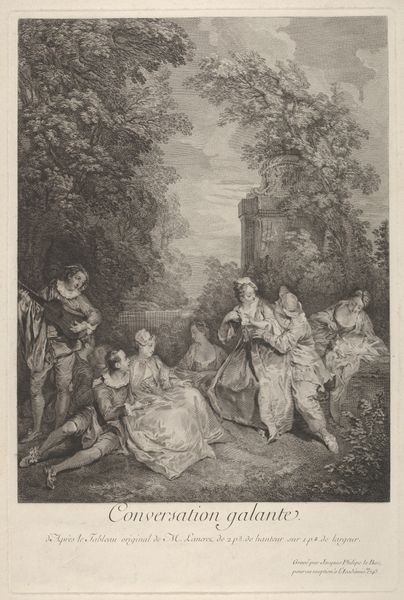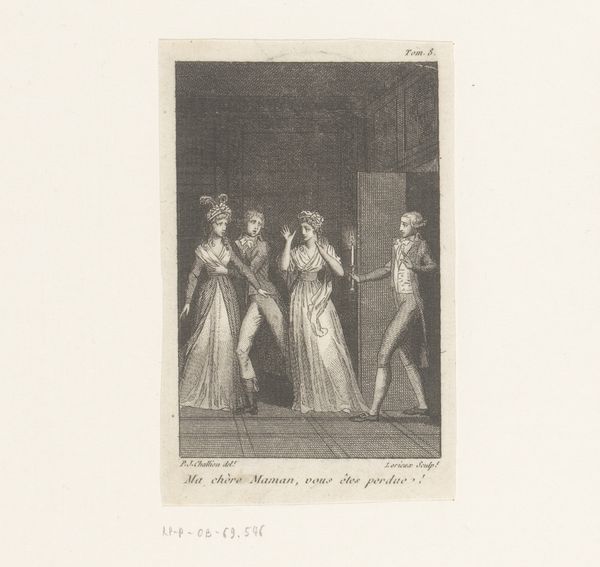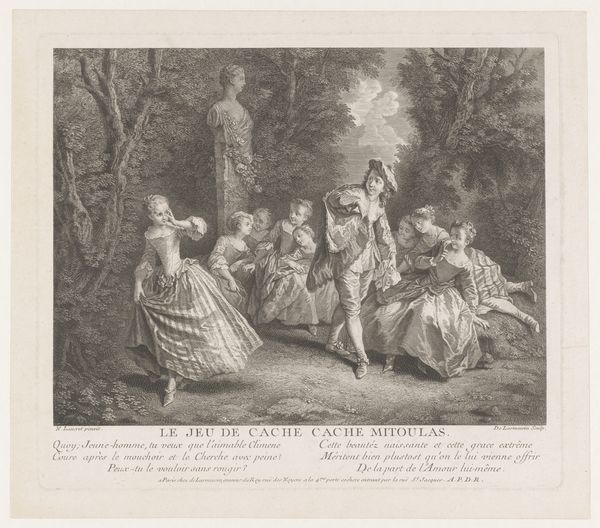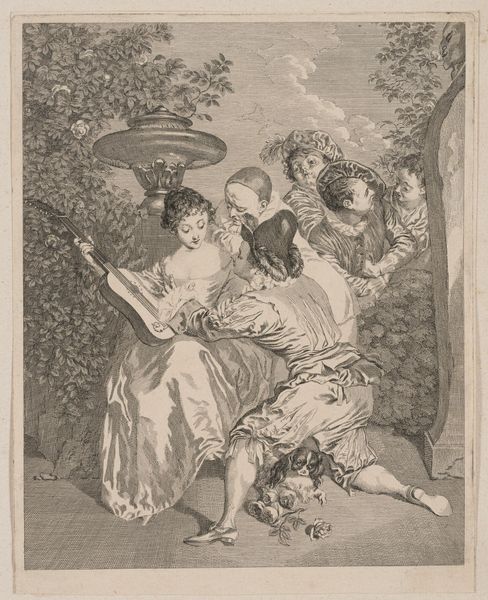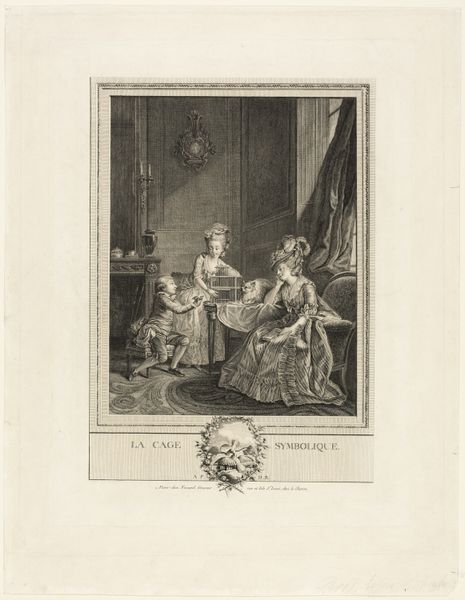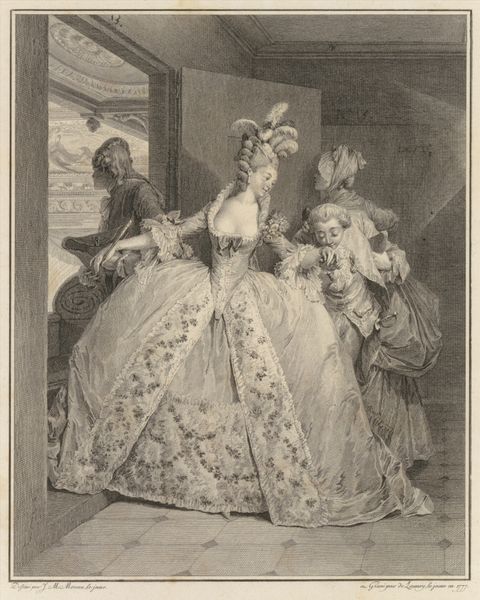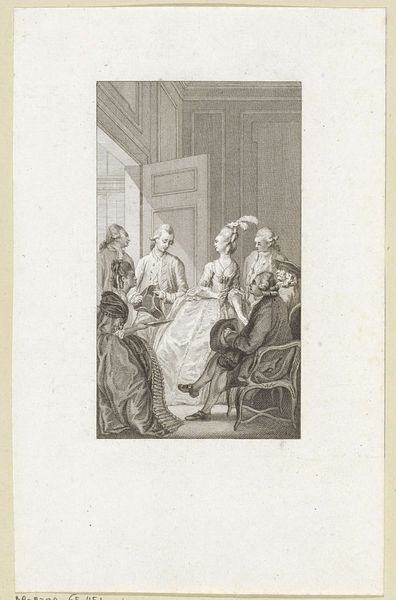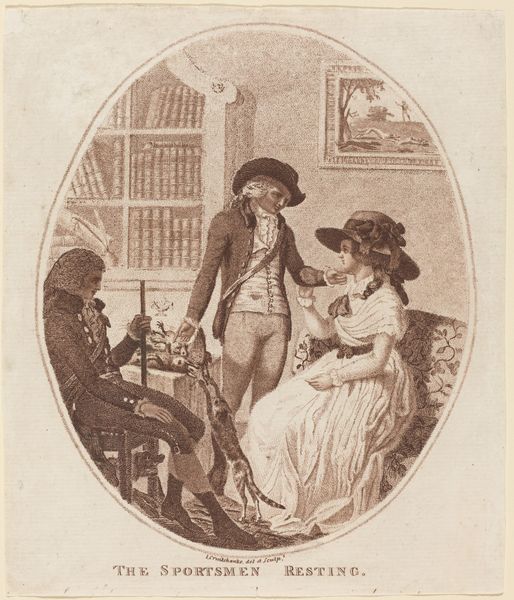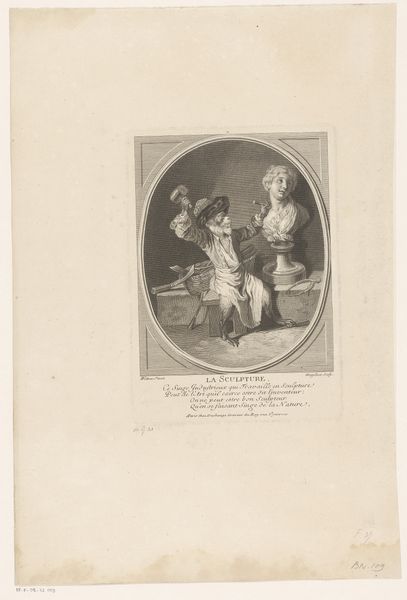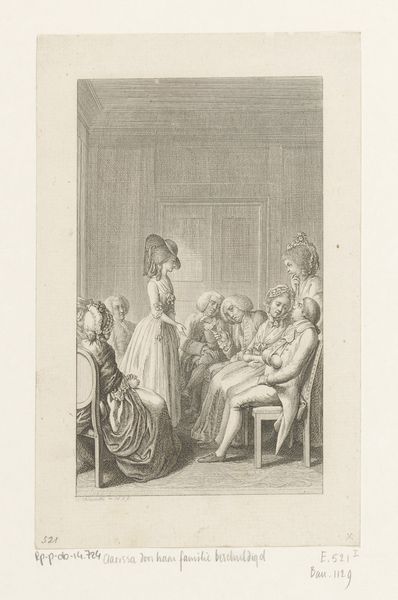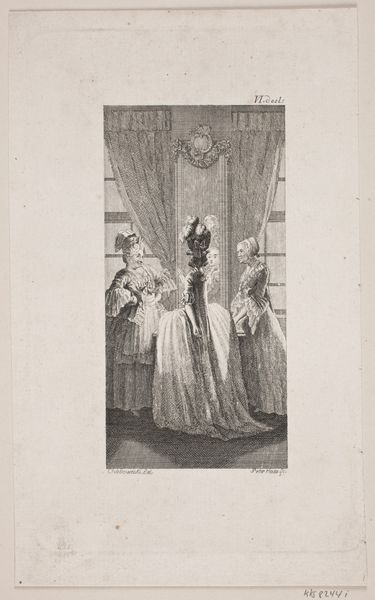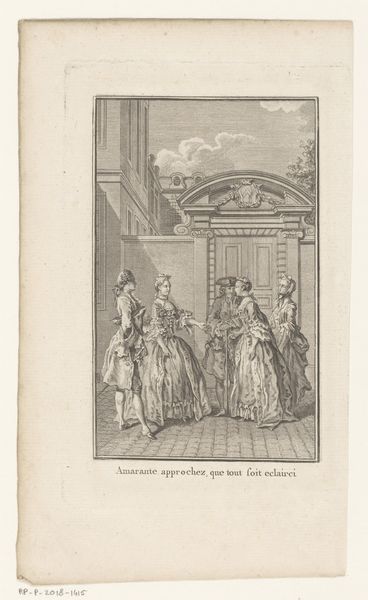
Les Bouquets ou la fête de la grand-maman 1788
0:00
0:00
drawing, print
#
portrait
#
drawing
#
neoclacissism
# print
#
child
#
group-portraits
#
men
#
genre-painting
Dimensions: Plate: 13 3/4 × 10 1/2 in. (35 × 26.6 cm) Sheet: 15 1/4 × 12 13/16 in. (38.8 × 32.6 cm)
Copyright: Public Domain
Curator: What strikes me immediately about this print is the sheer abundance of fabric, rendered meticulously in what seems to be an interior scene bustling with activity. Editor: Indeed! This is "Les Bouquets ou la Fête de la grand-maman," by Louis Philibert Debucourt, dating from 1788. It’s a print, a drawing, held here at the Metropolitan Museum of Art. The full title is in French, translating to "Bouquets or the Grandmother's Feast, dedicated to mothers of the Family.” It offers a window into the material culture and social practices of late 18th-century family life. Curator: So, beyond the family gathering depicted, is the artist making some comment on family, motherhood, or the culture around such gatherings at this time? The Neoclassical influence is clearly seen in the idealized representation, but how does the social context affect the art's creation and reception? Editor: Absolutely. Debucourt was adept at capturing contemporary Parisian life and mores, and his works are filled with insight into social and political life during the pre-Revolutionary period. This print speaks volumes about the idealized vision of family and domesticity promoted by the elites during this period, yet the actual conditions of most people might look very different. Also, this print, like other mass produced prints of the era, functioned as a form of social commentary. Curator: Right. Because as an engraver and printmaker, Debucourt isn't just picturing the leisured classes, but he’s engaged in a craft with its own methods and technologies that impact who gets to see it, where it is displayed, what it becomes beyond its original context. Editor: Precisely! We see here how art plays a public role, and is informed by politics of imagery: consider how this celebration of familial unity was disseminated in a period ripe for massive social change! That image might become a sort of propaganda. Curator: Looking at it, beyond what this picture is about, I keep being drawn back to the children and those massive swathes of draped fabric. The making of the clothes, how many people it must have involved... The consumption. Editor: Indeed, and through it all, the materiality of the objects and settings informs not only our sense of the era, but reveals broader issues surrounding production, consumption, and the social role of art. Curator: I am happy for these nuances of how the Neoclassic blended with an increasing societal awareness in revolutionary times; it adds complexity to a sentimental scene. Editor: Agreed, thinking about how a seemingly straightforward domestic image provides insight into complex political and cultural dimensions, as a way to think about shifts in class and power.
Comments
No comments
Be the first to comment and join the conversation on the ultimate creative platform.
